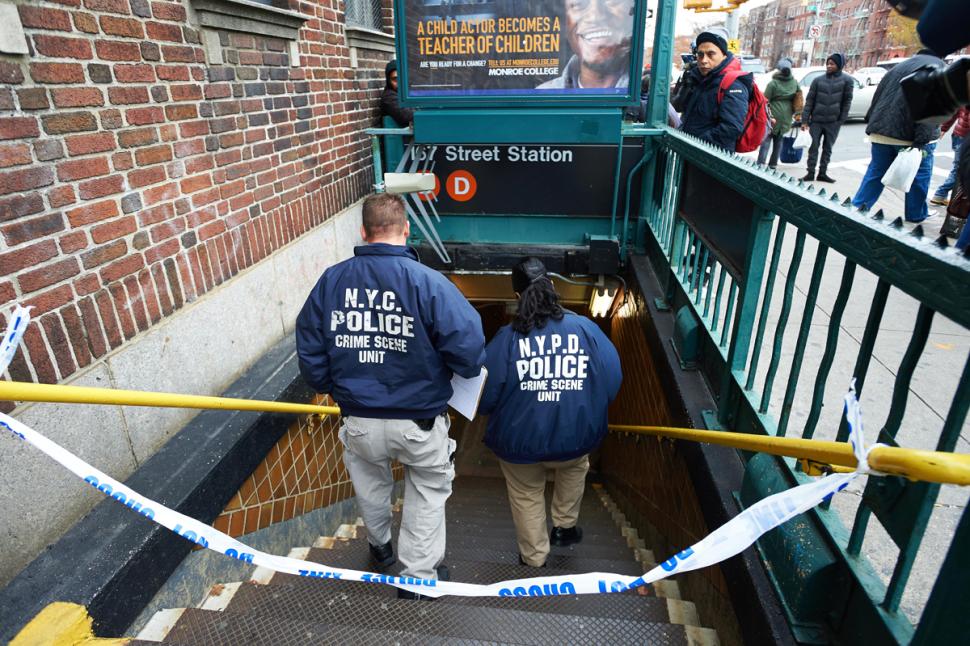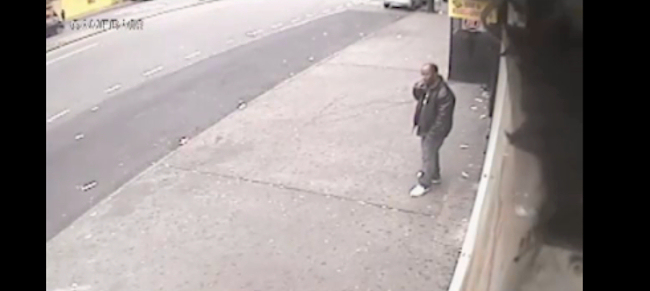
I hate to write a sensationalized headline like this one, but I can’t help but ask: why have the last three incidents in NYC involving strangers pushing their victims into oncoming subway trains also appeared to target middle-aged or elderly Asian American male victims?
On Sunday morning, 61-year-old Wai Kuen Kwok and his wife were getting ready to board the D train in the Bronx at the 167th Street station on their way to Chinatown in Midtown. All of a sudden, Kwok disappeared from view — shoved by a total stranger into the path of an oncoming downtrain train and to his death. There was no theft involved and no verbal exchange between victim and his assailant prior to the attack; instead, police believe that the attack on Kwok was entirely random.
While the New York Times reports 49 deaths in 2014 involving subway trains this year in New York City, Kwok’s murder is the first since 2012 that appears to be a deliberate attack; the rest have been ruled either accidents or suicides. And, I can’t be the only one who has noticed: Kwok is now the third person to be killed by being shoved onto the subway tracks in the last two years, and all have been middle-aged or elderly Asian American men.
What the heck is going on here?

In 2012, two high-profile subway-shoving attacks that resulted in the death of a victim appeared to target Asian American male victims. In early December 2012, 58-year-old Korean American husband and father Ki-Suck Han was killed following a verbal exchange between himself and his murderer, Naeem Davis, 30. Witnesses say Han confronted Davis after he appeared to be verbally harassing other subway riders. A shouting match ensued which culminated in Davis shoving Han onto the tracks; none of the onlookers went to help Han who was killed by a train entering the station less than a minute after he was pushed. Instead, freelance photographer R. Umar Abbasi took a graphic picture of Han moments before his death, trying to climb back onto the platform as a train barreled down on him; that picture was sold to The New York Post and insensitively run on the paper’s front page.
Just weeks after Han’s death in 2012, 46-year-old Sunado Sen — who was described as Indian American and a practicing Hindu — was killed after 31-year-old Erika Menendez pushed him onto the subway tracks in Queens. And while it is unclear that Han’s killing was racially motivated, Sen’s murder indisputedly was: upon her arrest, Menendez said in her confession, “I pushed a Muslim off the train tracks because I hate Hindus and Muslims ever since 2001 when they put down the twin towers I’ve been beating them up.” Menendez was allegedly off her medications during the incident, and currently faces federal hate crime charges in Sen’s death.

Two years later, police are now searching for a third suspect in a random subway pushing death. Kwok and his wife were at the 167th St. station when a man — described as balding, heavyset and in dark jeans, white sneakers and a black leather jacket — allegedly committed the unprovoked attack. He then allegedly jumped onto a nearby Bx35 bus and rode it three stops to West 170th and Jesup where he got off, entered a corner market, and then walked back outside to casually stand on the sidewalk smoking a cigarette; it is here that security cameras caught a glimpse of the suspect and are now seeking help from the public in identifying the man.
But already, questions arise. Was the attack on Kwok, like the attacks on Sen and Han, truly random? Or, could race have played a subtle role in each assailants’ choice of their targets? Could the identity of Sen, Kwok and Han as visibly Asian Americans signaled an Otherness that their killers took as an affront? Could all three of the victims have been perceived — by virtue of their race and/or their age — as less physically threatening, and therefore easier targets for assault?
In short, did anti-Asian racism play a subconscious (or in the case of Sen’s death, an overt) role in the deaths of all three men?
Until Kwok’s killer is found, the motives for his murder are unknown.
What we can rule out is that Asian Americans are somehow simply — by virtue of race or socioeconomic status — riding the subway more frequently than other riders, putting them at greater likelihood for random assault. A 2012 survey of subway ridership reveals that Asian Americans are only 4.9% of all NYC Metro subway riders in a city that is nearly 12% Asian American.
Kwok leaves behind his 59-year-old wife, Yow Ho Lee, who witnessed the murder and his 29-year-old son, Gary Kwok, a doctoral student at Adelphi University — and a shocked community, where limited English proficiency compounds the aftermath. The New York Times reports:
The victim’s wife, 59, who was not injured, was taken to Bronx-Lebanon Hospital Center for observation. By Sunday afternoon, detectives at the 44th Precinct station house, with the assistance of family members, had interviewed the woman, who speaks Cantonese.
…[O]n Sunday, Ms. Liang, a home health aide [and friend to the Kwok family], had been returning from work when her train stopped halfway into the 167th Street station. She heard an announcement, but understood little of the English. As she climbed the stairs out of the station with the other passengers, a woman could be heard screaming and sobbing on the platform.
“I heard screams but at the time I didn’t know what was happening,” Ms. Liang said, speaking in Cantonese. “Later, when I got home, I found out.”
Anyone with knowledge of this incident is invited to contact NYPD by calling 1-800-577-TIPS or texting CRIMES and entering the code TIP577. A $2000 reward is being offered for anyone whose tips lead to an arrest.
My thoughts and prayers go to the Kwok family, and I will update this post with any information regarding gifts or donations.
